The festivals in Croatia offer a captivating blend of ancient customs, modern creativity, and seaside charm. From raucous carnivals to serene religious observances and world-renowned music events, these famous festivals capture the essence of the nation’s diverse cultural identity. Celebrated along its sparkling Adriatic coastline and historic inland cities, each festival invites locals and travellers alike to experience the heart of the Croatian spirit, heritage, and hospitality. Whether you seek spiritual reflection, medieval reenactments, or beachside dancing, Croatia’s festival calendar has it all.
Top Festivals In Croatia
These best festivals in Croatia, showcasing everything from folklore and music to ancient traditions and contemporary arts.
1. Rijeka Carnival
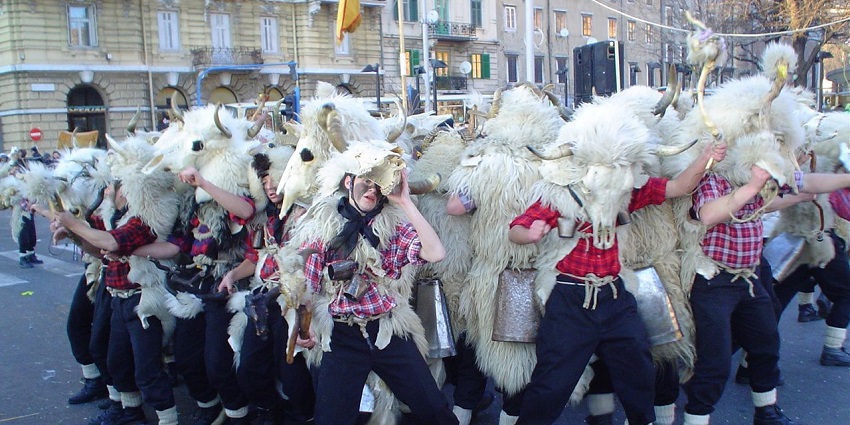
Photo: Rabko / Wikimedia Commons
The Rijeka Carnival is a flamboyant explosion of satire, costumes, and revelry. Dating back to medieval times, the festival has grown into one of Europe’s largest carnivals. The International Parade draws masked groups from around the world, while traditional events like the Zvončari bell ringers chase away winter. It’s a bold celebration of joy, identity, and community spirit.
Location: Rijeka
Month: Late January to mid-February
Nearby Attractions: Trsat Castle, Maritime and History Museum
Must-Try Cuisines: Fritule (mini doughnuts), maneštra (hearty soup)
2. Dubrovnik Summer Festival
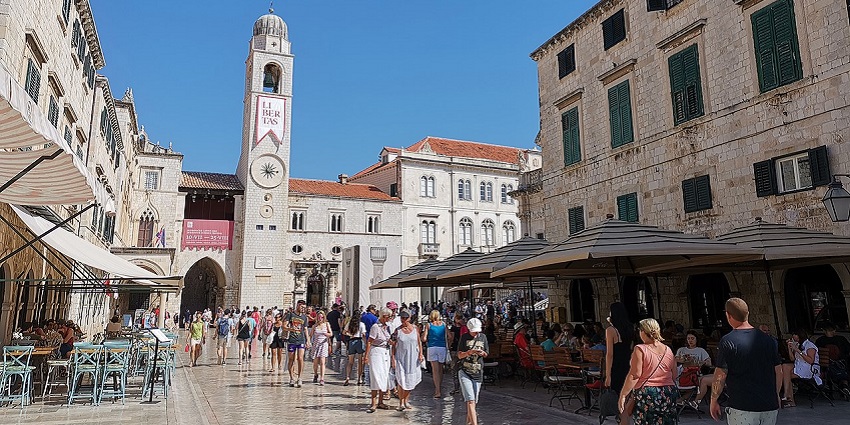
Photo: Z thomas / Wikimedia Commons / Image For Representation Only
This is one of the most elegant festivals in Croatia, where the arts transform Dubrovnik into an open-air stage. Featuring over 70 plays, concerts, and ballet performances across the city’s historic sites, the Dubrovnik Summer Festival is a must-see for culture lovers. Since 1950, it has attracted international artists and audiences to this UNESCO World Heritage city. It’s one of the most famous festivals for merging history, artistry, and stunning Adriatic views.
Location: Dubrovnik
Month: July 10 – August 25
Nearby Attractions: City Walls, Rector’s Palace, Lokrum Island
Must-Try Cuisines: Black risotto, peka (meat or octopus under a bell)
3. Sinjska Alka
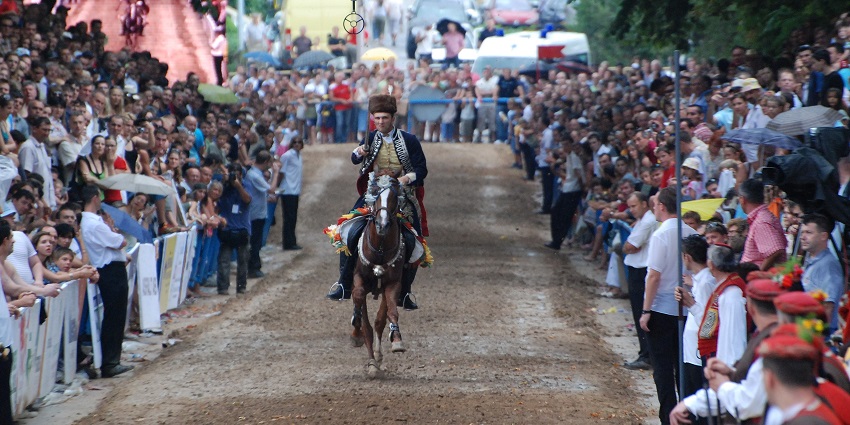
Photo: PJL / Wikimedia Commons / Image For Representation Only
Held annually since 1715, the Sinjska Alka is a riveting knightly tournament that celebrates Croatian bravery against Ottoman invaders. Riders gallop full-speed aiming lances at a small iron ring. Dressed in traditional military garb, they reenact the Battle of Sinj with immense pride. Recognized by UNESCO, this is one of the most meaningful cultural festivals, combining sport, pageantry, and patriotism.
Location: Sinj
Month: First Sunday in August
Nearby Attractions: Alka Museum, Cetina River
Must-Try Cuisines: Arambaši (stuffed cabbage rolls), soparnik (chard pie)
4. Ultra Europe
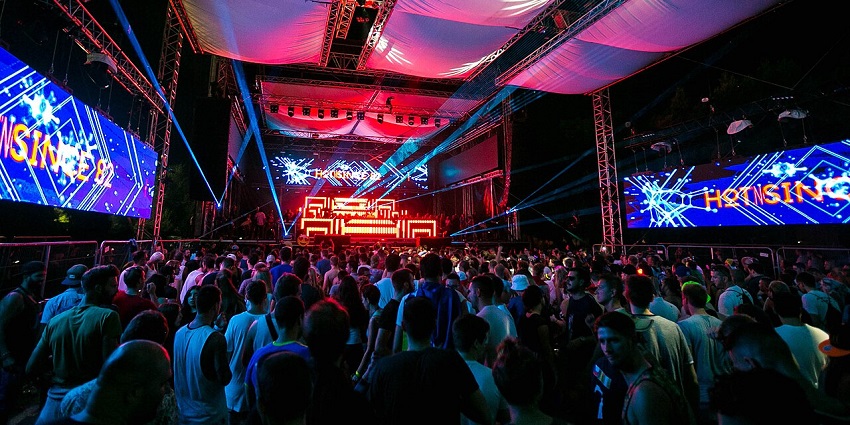
Photo: Ultrafan123 / Wikimedia Commons
Ultra Europe is one of the biggest electronic music festivals and draws thousands of fans to Split every summer. With a lineup of global DJs, wild stage effects, and after-parties on yachts and islands, it’s a non-stop celebration. The main event happens at Park Mladeži Stadium, but the party spills across Dalmatian hotspots, making it one of the top festivals for younger travellers.
Location: Split and surrounding islands
Month: July
Nearby Attractions: Diocletian’s Palace, Brač Island
Must-Try Cuisines: Grilled fish, pašticada (beef stew)
5. Easter In Hvar
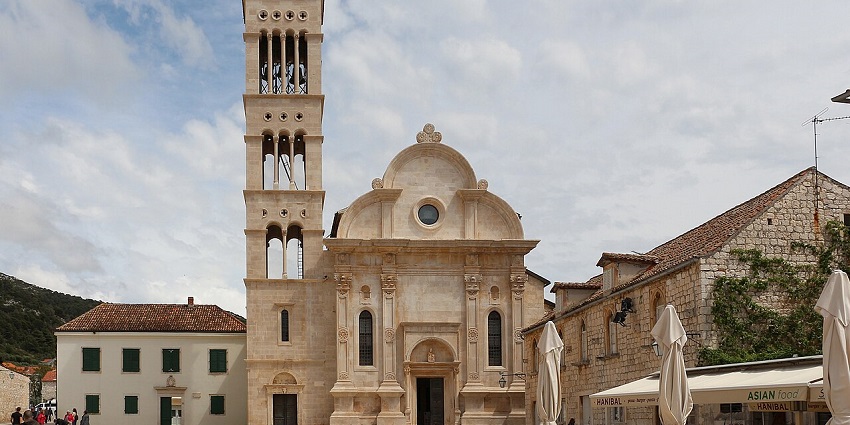
Photo: Bernard Gagnon / Wikimedia Commons / Image For Representation Only
Hvar Island’s Easter procession Za Križen (Behind the Cross) is a deeply spiritual experience passed down for over 500 years. Designated a UNESCO intangible heritage, it involves six villages walking overnight in synchronized processions led by cross-bearers. This silent pilgrimage symbolizes faith, endurance, and community.
Location: Hvar Island
Month: Maundy Thursday to Good Friday
Nearby Attractions: Stari Grad Plain, Hvar Town
Must-Try Cuisines: Gregada (fish stew), rožata (caramel custard)
6. Špancirfest
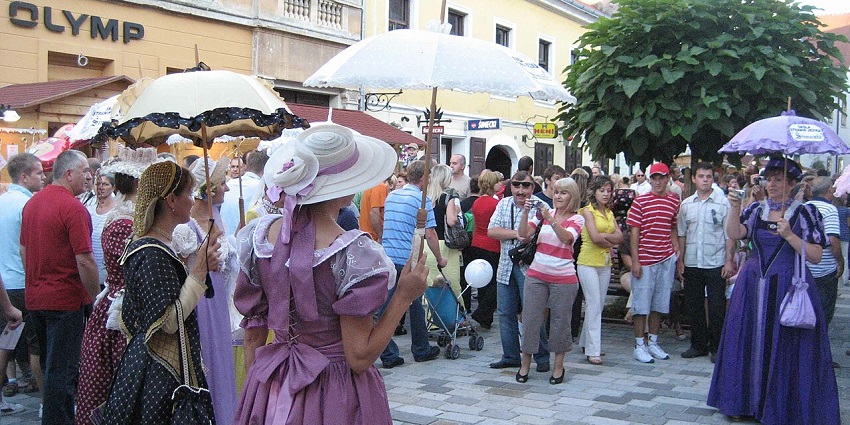
Photo: Modzzak / Wikimedia Commons
This family-friendly street festival fills the charming baroque streets of Varaždin with music, theatre, food stalls, and artistic expression. Špancirfest transforms the city into an open-air stage where everyone is welcome to participate. Street performers, musicians, and craftspeople line the avenues, offering something for all ages. It’s perfect for families, art lovers, and curious travellers alike.
Location: Varaždin
Month: Late August
Nearby Attractions: Varaždin Castle, Old Town Hall
Must-Try Cuisines: Čobanac (meat stew), kremšnita (custard slice)
7. Feast Of St. Blaise
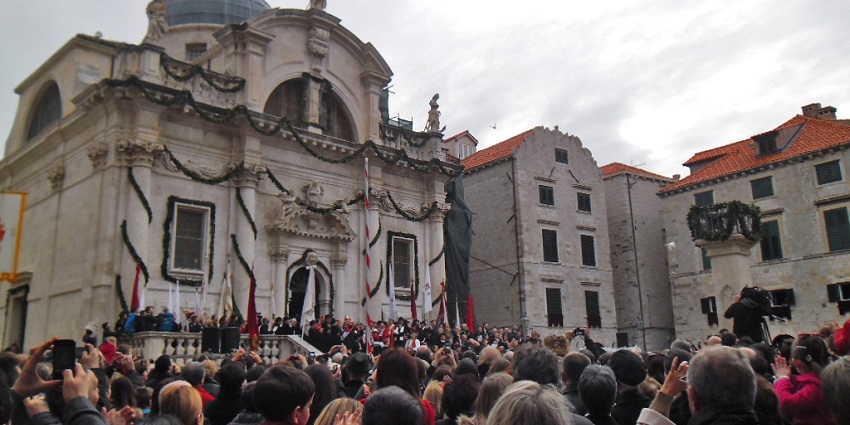
Photo: Rodrigo.Argenton / Wikimedia Commons / Image For Representation Only
Dedicated to the patron saint of Dubrovnik, the Feast of St. Blaise blends spiritual reverence with festive charm. With roots tracing back to the 10th century, this UNESCO-recognised festival features solemn church services, grand processions, and ceremonial flag raisings. Locals don traditional attire, carry sacred relics through the Old Town, and release white doves as a symbol of peace. Bells echo citywide, celebrating centuries of devotion and heritage.
Location: Dubrovnik
Month: February 3
Nearby Attractions: Sponza Palace, Franciscan Monastery
Must-Try Cuisines: Zelena menestra (smoked meat with greens), Dubrovnik rozata
8. Pag Carnival

Photo: Djontra wiki / Wikimedia Commons / Image For Representation Only
This offbeat winter festival on Pag Island is a vibrant showcase of Croatian folklore, featuring traditional dances, lively folk music, and comedic masked performances that delight locals and visitors alike. Central to the celebration is the kolo, a joyful circular dance performed in colourful costumes. Satirical skits humorously critique politicians and social life. The festival concludes with the burning of an effigy, symbolising the release of past misfortunes.
Location: Pag Island
Month: February and July (two editions)
Nearby Attractions: Zrće Beach, Pag Salt Museum
Must-Try Cuisines: Paški sir (Pag cheese), lamb on a spit
9. Outlook Origins
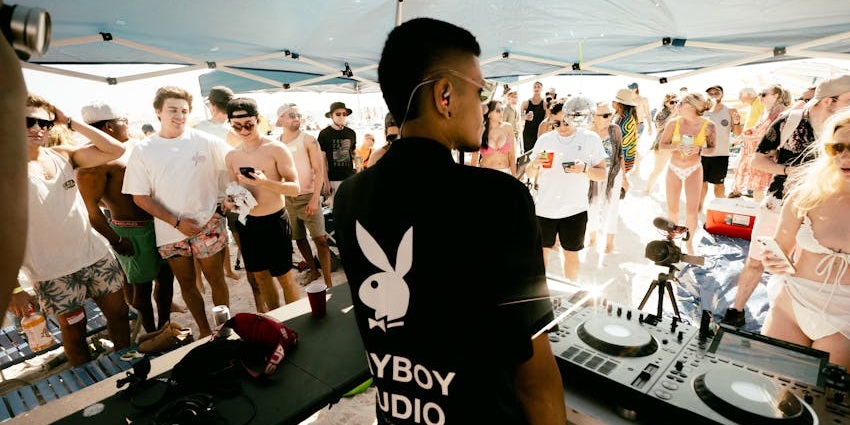
Photo: Summer / Pexels / Image For Representation Only
Outlook Origins is a niche offshoot of the renowned Outlook Festival, dedicated to the deeper roots of underground bass music. Set in the idyllic Garden resort in Tisno, Croatia, it delivers a unique mix of beachside sessions, boat parties, and late-night DJ sets under the stars. With a focus on dubstep, drum & bass, reggae, and sound system culture, it draws devoted music fans seeking pure vibes and coastal beauty.
Location: Tisno
Month: July
Nearby Attractions: Krka National Park, Šibenik Old Town
Must-Try Cuisines: Peka seafood, skradinski risotto
These famous festivals in Croatia invite you into a vibrant world of culture, faith, and celebration. From the thunderous gallops at Sinjska Alka to the hypnotic beats of Ultra Europe, the country’s festival landscape is as diverse as its coastline. Whether you’re savouring truffle-laced pasta under Istrian stars or dancing till dawn on an island stage, these events offer unforgettable cultural adventures. Plan a trip with TripXL for a truly immersive and joyous experience.
Cover Photo: Sundancer8 / Wikimedia Commons


 WhatsApp
WhatsApp
 Twitter
Twitter









